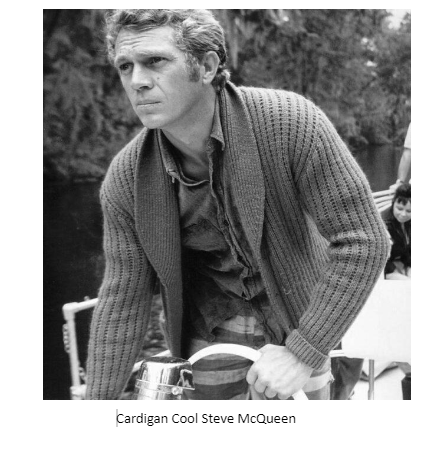Out of the Weeds of Ignorance Comes Cool Cardigan Knowledge on Wikipedia
When you’re trying to make sense of things, seeking to describe, decipher, and define . . . looking to fill an eclectic pot with facts, yet wondering from where they’ll come, and from whom will come the names they bear . . . there’s always that resourceful guide to lead you through thickets of unknowns, Wikipedia.
In appreciation for all the help it gives insatiably curious, impatient writers like me with fickle memories and knowledge gaps galore, I donate to Wikimedia Foundation and hope you do too.
Creating a Wikipedia page can put you in the limelight, expand your online presence, accelerate your recognition. Have a new product line you think many online users are unaware of? You can call on their professionals to work on your profile. We’ve created some Wikiesque profiles ourselves for clients.
You can start or create a Wikipedia page, personal biography or a research article about YOU!
Wikipedia is the biggest encyclopedia that allows users to freely compose any kind of informative content for readers provided they follow rules and policies.
But be careful. Composing biographies is no slam dunk. You must do comprehensive research, gather information from authentic resources.
Then there’s just our consulting Wikipedia as a source of trustworthy information, like recently I read somewhere “she carried a cardigan over her shoulder.” Of course, I know what a cardigan is. It’s a sweater with a button, when tied by a cloth belt, becomes a robe.
But who is this Cardigan? Someone who invented sweaters?
To ascend out of the weeds of ignorance onto that abundant fruit field of wisdom, I turn again to whom else? My fruitful fact garden, Wikipedia and quickly I become edu-cardigan-cated.
If you were watching TV in the 1950’s and 60’s, Wikipedia says you would probably have seen Perry Como wearing his trademark cardigan sweaters on TV complementing his easy-going style of singing.
Then there was the star of the long-running children's program Mister Rogers' Neighborhood, donning a cardigan at the beginning of each episode, made by his mother and that closed with a zipper instead of buttons. I met Fred Rogers once when he was visiting Dudley-Anderson-Yutzy, a PR firm where I was working in New York City years ago before I moved on to the TV networks up along 6th Ave.
Then, one of my favorite action movie heroes Steve McQueenpopularized cardigans, wearing them in the 1968 action thriller film Bullitt and in his personal life.
Kurt Cobainof the band Nirvana wore vintage cardigans, including one he wore during MTV's Nirvana Unplugged concert that sold in 2015 at auction for $137,500. According to Wikipedia, these salient facts: the sweater had a burn hole, a button missing, and discoloration around the pockets.
And, of course, Taylor Swiftwrote the song "Cardigan" using the sweater as part of her merchandise accompanying the song and her eighth studio album Folklore.
(I just wrote to Swift urging her to do a RecoverySwiftbenefit concert for hurricane victims in Florida still reeling from the massive destruction there)
And there is a Swedish band The Cardigans. And on and on Wikipedia peals.
So, from where does the name Cardigan come?
Back to Wikipedia, I learn the cardigan was named after James Brudenell, 7th Earl of Cardigan, a British Armymajor general who led the Charge of the Light Brigade at the Battle of Balaclavaduring the Crimean War.
It’s modelled after the knitted wool waistcoat British officers wore during the war.
The legend of the event and fame that Lord Cardigan achieved after the war led to the rise of the garment's popularity. Brudenell invented the cardigan after noticing that the tails of his coat had accidentally been burnt off in a fireplace.
French fashion designer Coco Chanel is credited with popularizing cardigans for women because, as I learned from my factual friend Wikipedia, "she hated how tight-necked men's sweaters messed up her hair when she pulled them over her head.”
And finally, the garment is mostly associated with the college culture of the Roaring Twenties and early 1930s, being also popular throughout the 1950s, 70s, 90s, 2000s and into the early 2010s.
Well, as sergeant JoeFriday used to say on the 1950s TV show Dragnet, “Give us the facts, ma'am,” there you have it from major to miniscule, compliments of my faithful, erudite friend, always ready to give an enlightening, educational hand--Wikipedia.
Thomas Madden
About the Author: Tom Madden is a prolific fact checker and writer of articles, blogs and books, including most recently, WORDSHINE MAN, available on Amazon. He’s also CEO of TransMedia Group, the award-winning PR firm he founded when he left NBC.



